Palmetto Bluff Real Estate Company Sales Office
Office Hours
Monday-Friday 9am - 5pm
Saturday 9am - 4pm
Sunday 12 - 4pm
Saturday 9am - 4pm
Sunday 12 - 4pm
It’s 4:30 a.m. The fog is thick again this morning, ideal for slipping unnoticed into the area I’ve heard a big tom gobbling all week. But will the fog today keep him from announcing his presence, I wonder?
I park the truck and as the hunter I am guiding loads his gun, I pause for a moment to practice the ritual that turkey hunters go through from March to May: check my vest for turkey calls, a head lamp, gloves, gun shells, my phone, GPS, and a compass before beginning the trek into the forest. But what separates me from other hunters is that my mile and a half trek is through the Palmetto Bluff woodlands.
At last, I’ve finally found it – this is where I needed to be the last three times that this clever old bird eluded me. I’m in the turkey’s bedroom with plenty of time before dawn.
Despite my quiet walk, I have not escaped without notice. It is only after I have settled into my hiding spot that the nighttime fauna once again resume their predawn routine. A lonely screech owl calls from the opposite end of the swamp and is echoed by a mate’s mournful call shortly after. A pair of great horned owls whisper back and forth to one another as they glide along the travel corridor behind me, searching for an early breakfast. Then, suddenly, there it is – the only sound in nature that sounds almost as beautiful to me as a gobble – the piercing call of a chuck-wills-widow. I’m mesmerized by the call and seconds turn into minutes as I think of how much I love being out here in the woods waiting for the sun to rise. I think of other turkey hunts that have taken place right here where I’m standing. I remember Fluffy’s bird. I remember Rans’s bird. I remember the big gobbler I called for Mr. Vince. But my reminiscing is sharply ended by the sharp call of a barred owl.
It’s time. Will this big bird gobble back? I wait.
Nothing.
It’s getting lighter now; I can make out distant shapes and features that I did not see earlier in the darkness on my way in. The crows join the owls in calling now. Surely this gobbler will announce his presence.
And then finally, there he is, exactly where I thought he should be. He has the hardest, heart-pounding gobble I’ve heard this year. I’m set up, ready, and I begin the dance. Can I lure this wild creature to within a shotgun’s sight?
I reach in my vest, pull out a small horseshoe-shaped frame with a piece of rubber stretched across it and pop it in my mouth. I blow softly against it and I can’t help but to grin a little. My hen yelps and clucks are sounding especially seductive today and my prey thinks so too. He immediately cuts my calls off with a massive gobble. He has fallen for the trap. Truly, I could leave the woods now, satisfied with the knowledge that I have communicated with this great bird. But I am not the hunter this morning. Today I am here to call a turkey and give one of our property owners the thrill that, in many ways, is more addictive than any drug available: the opportunity to kill an adult Palmetto Bluff gobbler. And sometimes, that first-time hunter will become a true turkey hunter.
You probably know a true turkey hunter though you may not realize it. He or she is the person whose eyes get a certain sparkle about the middle of February and who comes in to work a little later from February to May. This is the person whose vacations are spent in the spring woods and who has the patience of Job. It’s the person who helps out at the hunting club is never seen during the deer season. This person is one of the brethren, a true turkey hunter. I am lucky to be one of these few.
My name is Jay Walea and I’ve been addicted to turkey hunting since I was 13 and called in and killed my first turkey at our old hunting club, Hamilton Ridge. I’ve worked and turkey hunted on Palmetto Bluff for 27 years now. Once the young gun seeking advice from the experts such as Charlie Bales, Gordon Wells, and Larry Zettler, I am now the experienced and grizzled hunter giving advice and calling lessons to the young up-and-comers of this sport. My love for the eastern wild turkey, the species as well as the hunt, runs deep, and it’s hard to put into words why I love it so much. But I’m going to try, and I’ve also enlisted the help of two other veteran turkey hunters to share their love of the sport with stories from their most memorable hunts at Palmetto Bluff.%GALLERY%Jay Walea’s Favorite Turkey Hunt
It would be a lot easier and a much shorter article if I told you what I disliked about turkey hunting, which is nothing, and my love for turkey hunting is more than just the thrill of the hunt: I love everything about the eastern wild turkey in itself. When eastern wild turkey chicks hatch, they imprint on their mother’s voice and appearance, which means they can recognize their mother by their voice or appearance almost anywhere. No other species, other than the gallinaceous or ground-nesting family of birds, have this strong visual imprinting, and their reliance on visual cues is evident throughout a turkey’s life.
For example, a flock of eastern wild turkeys feeding in a field always has at least two turkeys standing guard, working in tandem, scanning the sky and the forest edges for danger. When a threat is spotted, an alarm call goes out, and, unlike other birds or mammals that would simply flee wildly, the whole flock relies on the lookout to let them know of danger. Then the decision is made: the lookout directs the flock to flee in the safest direction and method, whether that be by wing or to run for cover. Most hunters, even if turkey is not their prey, have probably seen this happen, but just have not been aware of what was occurring.
At Palmetto Bluff one of my primary objectives is to create the perfect habitat for the eastern wild turkey, as in doing so it creates the perfect habitat for all other Lowcountry critters and creatures. One of the highlights in carrying out this objective is to watch the hatched turkey young grow into adulthood. After years of observing different flocks on a daily or weekly basis, I’ve noticed that as early as 4-5 weeks, when the chicks become poults, their social groups are organized in a hierarchy of power and, once established, the hierarchy remains into adulthood.
I also found that the vocalizations or language of turkeys is more sophisticated than that of any other animal in North America. True, that if broken down just for the sake of hunting, one could keep the calls to yelps, clucks, and purrs, and by throwing out these odd “words” every now and then be lucky enough to have an amazing hunt. Yet it’s all the little intricate whines, whistles, half clucks, and soft, sporadic, broken yelps that make the true language of this species. With these, a caller can produce “sentences” and converse with both hens and gobblers alike and have the satisfaction of knowing that you have graduated into the fold, a group that, quite honestly, not many turkey hunters belong to.
Yet even the most skilled hunter will admit that Murphy’s Law comes into play on nearly every hunt. Very rarely do hunts turn out exactly like you thought they would – maybe 10 hunts in a lifetime of hunting. I’ve hunted the same bird as many as six hunts before my hunter or I harvested the bird, and even then it didn’t go exactly as planned. I firmly believe that the male eastern wild turkey has a sixth sense, a primal instinct in his ability to sense danger even when the calls, the setup, and everything is right with the world. There are gobblers that I hunt year after year until they are nowhere to be found, probably finally succumbing to old age or a hard winter rather than my shotgun.
As I think back over the last 30 years of hunting, this majestic creature, and the thousands of hunts both on my own and as a guide, I find it impossible to pick out a favorite hunt to share. I could tell the story about the bobcat and me, or the one about the pump swamp gobbler, even the tale of our former governor and I, all unforgettable and amazing hunts. But for now I will tell the story of Rocky and Limpy, an account of the hunting and survival of an elusive gobbler we named Limpy.
The year was 1995 and it was a chilly Tuesday morning when I pulled up to the Palmetto Bluff Lodge to pick up Rocky, a client who hunted with me every time he came to the Bluff. It was four a.m. and, to my relief, the hunters were not up yet, giving me and the other guides time to enjoy a well-deserved cup of coffee. Shortly after I sat down, the hunters started wandering in, one by one, still half asleep and looking for the same needed pick-me-up that I held in a steaming cup in my hand. Guides and hunters bantered briefly and then I told Rocky to get his gear and load up in my truck. We were leaving early because we had a long walk through the center of Pump Swamp to get close to where I knew our trophy was roosting. There was no moon that morning, but we made it to our destination well before the threat of daylight. As in every hunt, the sounds in the predawn night mesmerized me and my mind wandered until I was almost startled by the gentle light that meant morning was upon us. As if on cue, our bird thundered a leaf-shaking gobble only a hundred yards to our south. Another gobbler, then another joined the chorus as the woods erupted around us with gobbles. I began calling and right away all three gobblers answered back. I leaned in and told Rocky to get his gun up and to get ready. The birds flew down to my calls, ignoring the hens they’d been with day after day, eager to meet the new girl on the block. The three huge two-year-old gobblers strutted and drummed and came in as if on a string just 25 yards away. They were putting on a grand show, the show I live for. The largest bird was in the middle and I whispered to Rocky to take that bird. I clucked and the middle gobbler craned his neck upward. I gave the order to shoot.
When Rocky pulled the trigger, leaves and feathers flew in the air and so did all three gobblers. I immediately felt sick. Rocky shot too low and as the birds flew away I noticed that the middle gobbler was shot in the leg. We tried to catch up with the birds, but it was to no avail. Rocky, a bundle of nerves by now, was trying to figure out where he went wrong, saddened by the fact that he wounded the animal that had just given us an amazing show. I figured that the gobbler would fall prey to his wounds, but later on that season I spotted the wounded turkey in a field, not far from where he had been wounded. I named the poor soul Limpy.
The next turkey season, it seemed as though every week the other guides would report sightings of Limpy. Despite his bad leg he moved daily and was never in the same area as the day before. I made it my goal that year to harvest Limpy. But the ’96 season went by and Limpy was still around. I finally figured outthat Limpy couldn’t stay in a single home range because the other toms, both young and old, used his disability against him. Whenever Limpy tried to get a harem of hens for his own, he faced the wrath of the stronger gobblers and was beaten up for his efforts.
In 1997, the sightings continued but Limpy remained elusive. Months went by in 1998 and there was no sign of Limpy, and I finally resigned myself to the fact that he must not have survived the winter.
Late in the ’98 season, I was on my own, on the edge of a field deep in the woods of Palmetto Bluff, savoring the solitude and the hunt. I had a gobbler answer my call, but after talking back and forth with him and his hens, he finally decided that the 12 ladies he had were better than the one he couldn’t see and he went off with them. As I headed back to my truck, I decided to call one more time. I called and got a gobbler to answer just up the grassy road from me. I immediately set up and began to call to him. All of a sudden, I heard the bird take flight and thought a coyote or bobcat had just ruined my hunt. Then, to my surprise, I saw the gobbler gliding in through the pines. I watched it land in front of me, behind a thicket of gallberry and fetterbush. There he strutted and gobbled for minutes that seemed like hours. Finally he came into view and started limping straight to me. I could not believe my eyes – it was Limpy! He made it to 20 yards before I ended his hobbling career.
What was once a two-year-old mature gobbler had turned into an old beat down shell of his former self. The old injury and years of abuse from the other Bluff turkeys had taken its toll – his weight was a mere 14 ½ pounds. But Limpy had survived to be four years old, a remarkable feat considering his injury. Perhaps after being shot, he became more cautious. Perhaps he was fighting against caution when he heard the call of a flirtatious hen. Perhaps, if he had been able to resist the call, he would have survived another year or more.
More than 15 years later, I still relive that hunt and Limpy remains my most respected quarry.
Mike Rahn’s Favorite Hunt, as told to Jay Walea
Mike Rahn is one of my best friends and has worked with me on Palmetto Bluff for over 24 years. I’ve always looked up to Mike and paid close attention to the life and hunting lessons he has taught me over the years. A gentleman, a first-class mechanic, and a turkey-hunting genius, Mike is the kind of man who says few words, but the words he does say are certainly worth listening to. A great deal of my “woods sense” comes from Mike, whom we affectionately call “Curly” because, like me, he has a noticeable absence of anything resembling a curl upon his head.
Mike enjoys turkey hunting for many reasons and finds the interaction through calling, actually speaking the language of the turkey, the most rewarding, just like I do. Mike explains this as a challenge because when a hunter calls a gobbler into range, he has made that bird do something that he doesn’t do in nature: seek out a hen. Without a hunter’s calls, a gobbler stays in one area and the hens come to him.
The action of the sport factors strongly in Mike’s love of turkey-hunting. Unlike any other hunt in the world, there is very little down time in this sport. Other hunts are predominately waiting until the quarry is spotted, and then, and only then, does the hunter’s adrenaline rise. Whether a turkey is harvested or not, it is the pursuit itself, the back and forth of the calling, that keeps the turkey hunter and his guide on the edge of their seats for the hours in the field.
Being a family man, Mike enjoys passing down his knowledge of turkey hunting to the younger generation. His favorite hunting story naturally involves his son, Shane and his first gobbler.
“It was hours before daylight when my son Shane, then 11 years old, and I set out from our old office in what is now Palmetto Bluff’s Wilson Village. I was eager to get Shane his first gobbler and of course he wanted it to be on Palmetto Bluff. Shane, unlike many kids his age, had grown up around hunting on Palmetto Bluff. He’d hunted deer and hogs and had been with Jay and me as we followed dogs on hog hunts that would have made his mother faint, and would have shortened both Jay’s and my lifespans by a considerable number of years had she found out about them.
The night before this particular hunt I heard a flock of turkeys, five adult gobblers with many hens, fly up to roost. So, long before daylight with nothing but the light of the moon to guide us, I led Shane silently into position along the edge of Old Cottonhope Field. The morning was crisp and cool with zero cloud cover, a turkey hunter’s dream. As night gave way to morning, the flock of turkeys began calling. The gobblers were gobbling and the hens were yelping and clucking as if to say they had had a great night’s sleep and were ready for the new day to start.
I began a series of hen calls and both the gobblers and hens acknowledged my presence as one of their own. Finally, fly down time. Over the span of about 10 minutes, the turkeys got excited, and one by one pitch from the safety of their roost to the open field to get on with the day’s events, which at this time of year consists of feeding and breeding. Content and answering my calls, the turkeys ever so slowly began filtering across the field to our ambush point. The gobblers were bringing up the rear, but getting close to a range where I felt comfortable telling Shane to shoot. Just as I was about to tell Shane to pull the trigger, a coyote appeared across the field. In an instant the turkeys were on the wing in a panic to get away from the danger.
I looked over at Shane and was shocked by how upset he was. Even though he was young, Shane was already hooked by the thrill of turkey hunting. I didn’t want the morning to end with such a disappointment and Shane was not ready to give up and go home. I knew the birds had gone into Cottonhope Swamp and I also knew that we could get around them and maybe even get into a position where we might have another chance.
Around to Smilax Vine Road we went as fast as we could get there. We slipped in on the edge of Smilax Vine Hill and Cottonhope Swamp, directly across the swamp from where the flock had disappeared just minutes before. Hidden among the beautiful beech and hickory trees, nestled in close to the sparkleberry bushes to break our outlines, I started calling. Immediately I was answered with a loud gobble that meant that the bird was close. A few soft hen calls later and we could see the gobbler just out of range, strutting in front of us, trying to get the new hen to show herself. This was an old bird, a smart bird, and he began to circle us. I was a nervous wreck because I knew that to get this bird I would have to reposition Shane and movement is impossible when trying to call a turkey. When the gobbler finally ducked behind a large group of hickories, I grabbed Shane and in one fluid motion spun him around a tree and got his gun back up and ready for the tom to emerge. I made one more subtle call and out strutted the old bird at 15 yards. Shane pulled the trigger, and all at once, he had taken his first adult gobbler. The gobbler weighed 18 pounds, had a 10-and-a-half inch beard (the feather-like decoration on his chest), and an inch and one-eighth spurs. This was a very respectable three-year-old bird. And, as I suspected, Shane, like all true turkey hunters, was hooked right then and there and his life changed forever.”
Charlie Bales’ Favorite Turkey Hunt, as told to Jay Walea
I have been blessed in this life to have been mentored by great men like my father, my grandfather and the one and only Charlie Bales. Charlie is a true woodsman, living his life by the changing of the seasons. I have worked with Charlie for 27 years, my entire career in wildlife and forestry management. Many of the skills I have honed in the wilds of South Carolina, I attribute to Charlie’s tutelage. Charlie is a true turkey hunter, having started early in life as a Florida cracker, hunting the live oak and saw palmetto of the south Florida scrublands. He learned from ol’ timers, all gone now, the ways of communicating with the turkeys and that in this conversation less is more. This is unlike what we see today as most turkey hunters seems reluctant to even take breath between calls. I have found myself in this category but always revert back to Charlie’s teaching: “Less is more. Let the gobbler hunt you.”

Charlie’s signature hen call, so soft that you doubt whether any bird can actually hear it, always gets an immediate response from a gobbler. And despite his decades of success, each answering gobble still gives Charlie a sense of amazement and satisfaction. He is a part of that elite group of hunters who can speak the wild turkey language and who find just as much reward in knowing that the quarry has responded to their calls as in harvesting the bird.
Charlie is also one of the few people who know Palmetto Bluff’s land and wildlife so well that they seem to have a psychic ability to find a turkey roost. In reality, it is Charlie’s scouting ability that leads to hunt after hunt being a success. And although his years of observations and his love for the Bluff may be hard to replicate, Charlie is happy to share some tips. He explains that during the predawn hours a hunter gets signals from every creature, from the trees to every shrub in the woods. A hunter needs to be alert and listen to every sound. From the flutter of a chuck-will’s-widow to the first gobble, every noise is a piece
to the puzzle of a productive hunt. It’s understanding every nuance of the woods on a spring morning that makes a person a true turkey hunter.
Charlie has had countless turkey hunts on Palmetto Bluff with many falling into the “favorites” category. He chose to tell the story of Mike Till and Mike’s first gobbler.
“It was a clear crisp morning when Mike Till, a friend of my son Wade, and I headed into Pump Swamp with our bows to hunt “Ol Thunder.” (It is hard enough to harvest a mature gobbler with a gun much less a recurve bow. There are so many watchful eyes in a flock of turkeys that the added movement of drawing a bow is next to impossible.) I had been after this bird for a while, but although Mike had hunted deer and small game his entire life, this was his first experience hunting turkeys. I spent a full day talking Mike through a proper turkey hunt and giving him the dos and don’ts before we set out on this beautiful spring morning.
I decided to set up on a spur ditch west of the “dinosaur bones,” a dead live oak toppled by Hurricane David that resembles the pitiful remains of the giants that once roamed the earth. I put Mike 10 yards out in front of me so he would be the first to get a shot should the right situation present itself. I sent out a quiet tree yelp and, as if on cue, the swamp lit up. Five gobblers began gobbling and a multitude of hens began their morning song. I set back and enjoyed the concert, content for this was already a successful hunt. Mike was frozen, momentarily stunned by the turkey talk in the trees around them.
Then, the wing beats of 20 or more turkeys erupted from the dawn sky. The hunt was on. I let the woods settle down and then produced a lost call. This got an immediate response and in less than 10 minutes hens and the five big gobblers could be seen from our ambush spot. I clucked once more and the birds got into range. There were so many turkeys in front of us, eyes in our direction, that we never had a chance to get our bows up to draw. After an hour of the turkeys doing what turkeys do, feeding and breeding, the birds wandered away from the hunters. We gave it a few minutes and slipped out of Pump Swamp undetected by the turkeys. Though that was it for the day, Mike was still amazed at all the sounds that the turkeys made while they were in front of us.
The next morning we went back into Pump Swamp. I set up about 60 yards away from our previous spot, this time nestled between the fluted tree roots of some large live oaks that would better hide the outlines of our bodies and bows. Just like the morning before, after my first call, the woods lit up with the sounds of turkeys. But today, after fly down, the gobblers came to my calls with Ol’ Thunder leading the way. Unlike the day before the hens and the jakes (juvenile gobblers) kept their distance from the mature gobblers who were strutting and sparring over who was second in command because it was clear that Ol’ Thunder was first. Into bow range the gobblers moved, but with every step, other watchful turkey eyes kept the young hunter from drawing his bow. Like the day before, the birds along with Ol’ Thunder finally meandered out of range with no arrows released.
With just one day left to hunt, we had to change our strategy. We headed off to a different place on Palmetto Bluff. The morning was quite unlike the adrenaline-filled mornings before. After several hours of trying to get a gobbler to gobble and give away his location, I decided we should move again. This day was the last hunting day for Mike, and so he left the bow at home and brought his shotgun instead. About 8:30 a.m., we were slipping through the pines silently, walking the edge of the hill above Pump Swamp on a trail called Lightline Road. When I got to the fork in the trail and I did a crow call that will startle a gobble out of a gobbler. This is called a shock gobble, in which the sudden loud sound of the crow brings a startled gobble from the gobbler. Right away it worked and a bird gobbled at a distance of about 300 yards. I knew exactly where the bird was and I hurried Mike up the road a hundred yards before setting him down in a curve so that he could see the gobblers approaching.
I moved into position behind Mike and began calling. I was almost eight yards behind him so I couldn’t see what was happening in the trail, but years of experience taught me to stay focused on the task at hand. I gave a soft lost call; about 10 to 12 notes was the secret. The gobbler triple gobbled at the call and I hushed, hoping the gobbler would defy his instincts and come looking for the hen.
After 10 minutes of silence I clucked softly and then yelped a time or two. Although I hadn’t heard the bird gobble, I started hearing the distinct drumming of the gobbler. Drumming is a very low frequency sound made by the male gobbler while in strut and can only be heard by a human’s ear at close range.
From 300, this gobbler closed the distance and came into gun range strutting and drumming until Mike’s gun went off and he had finally taken his first gobbler.” (Mike’s gobbler wasn’t Ol Thunder-Ol Thunder had another year before Charlie harvested that regal bird.)
The hunt was amazing and Charlie never saw the gobbler until after Mike’s shot even though he was the reason for the bird’s demise. This was his favorite hunt because of what Mike Till had learned, the circumstances they faced and the many wary eyes that were upon them, except for the last day when it all came together. Charlie felt the pride of having trained yet another young hunter who, from that moment forward, has been hooked on the sport of turkey hunting, his life also forever changed.
After thousands of turkey hunts on Palmetto Bluff and across the country, our views about the sport are very much the same. Whether it be the love of the spring woods and its inhabitants, the thrill and pride of knowing that we speak a language that not many others do, the satisfaction of passing down our knowledge to a younger generation, or our love for Palmetto Bluff, we are in that elite group, that band of brothers, true turkey hunters. I would like to believe that those ol’ timers who mentored Charlie in the ways of the turkey are smiling at us, knowing that we are more at home, more in tune with the world when we are leaning against an old live oak on the edge of the swamp in the predawn darkness waiting for the sun to rise and the turkeys to gobble on this beautiful piece of ground. This place—Palmetto Bluff.
And what are the Legends of Spring? The old gobblers that we hunt through the years and the stories of the hunters we guide.
Photography by Mark Staff

Warm, fragrant, and deeply comforting, Chef Beth’s Southern Sausage & Sage Stuffing is a holiday classic that brings together rich pork sausage, fresh herbs, and toasted bread for the ultimate savory side dish. Studded with green apples and aromatic vegeta...
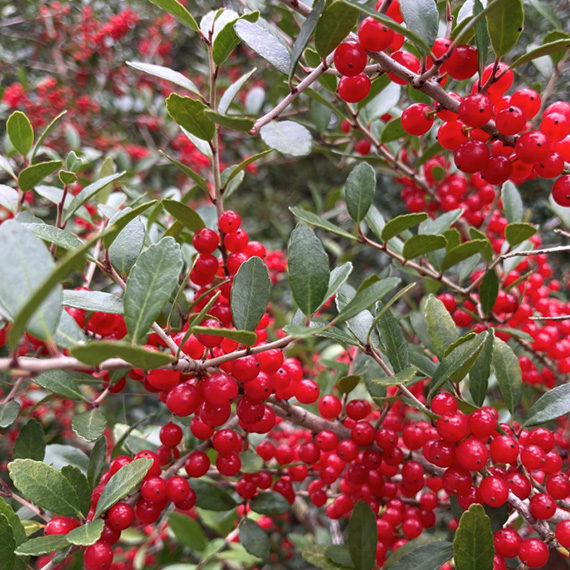
As December settles over Palmetto Bluff, it brings softer light, cooler mornings, and the natural beauty of native evergreens and winter berries that define the Lowcountry landscape. Palmetto Bluff Conservancy’s Education and Outreach Manager, Aaron Palmieri, ...

In 2025, Palmetto Bluff welcomed new neighbors and old friends, groundbreakings, and long-awaited openings. From inspired Club gatherings and elevated programming to the creation of our latest golf course, the year was defined by connection and excitement for ...
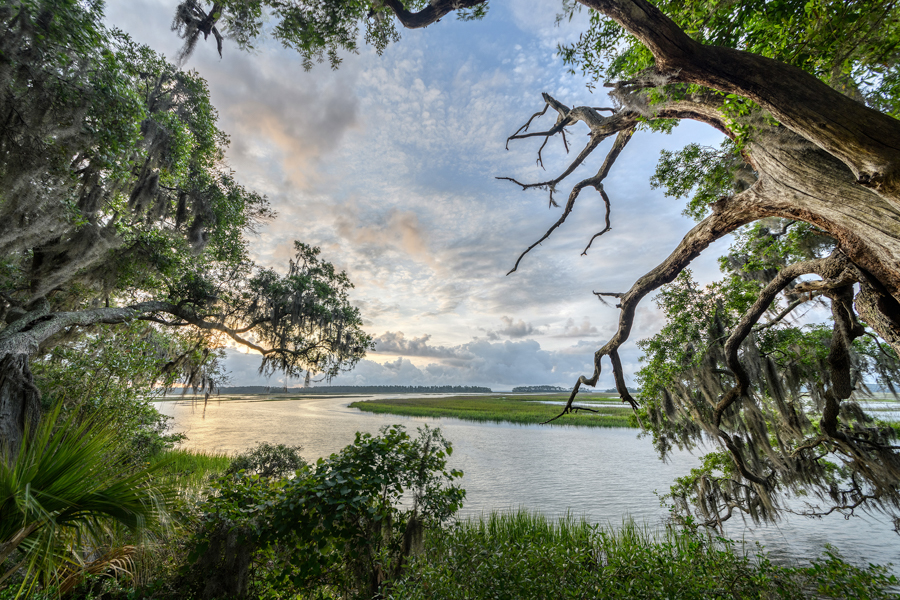
There is something serene about waking up to shimmering water, the stillness of the woods, or the sweep of marsh and sky right outside your window. Even without stepping outside, science shows that simply seeing nature from home can meaningfully improve mental...
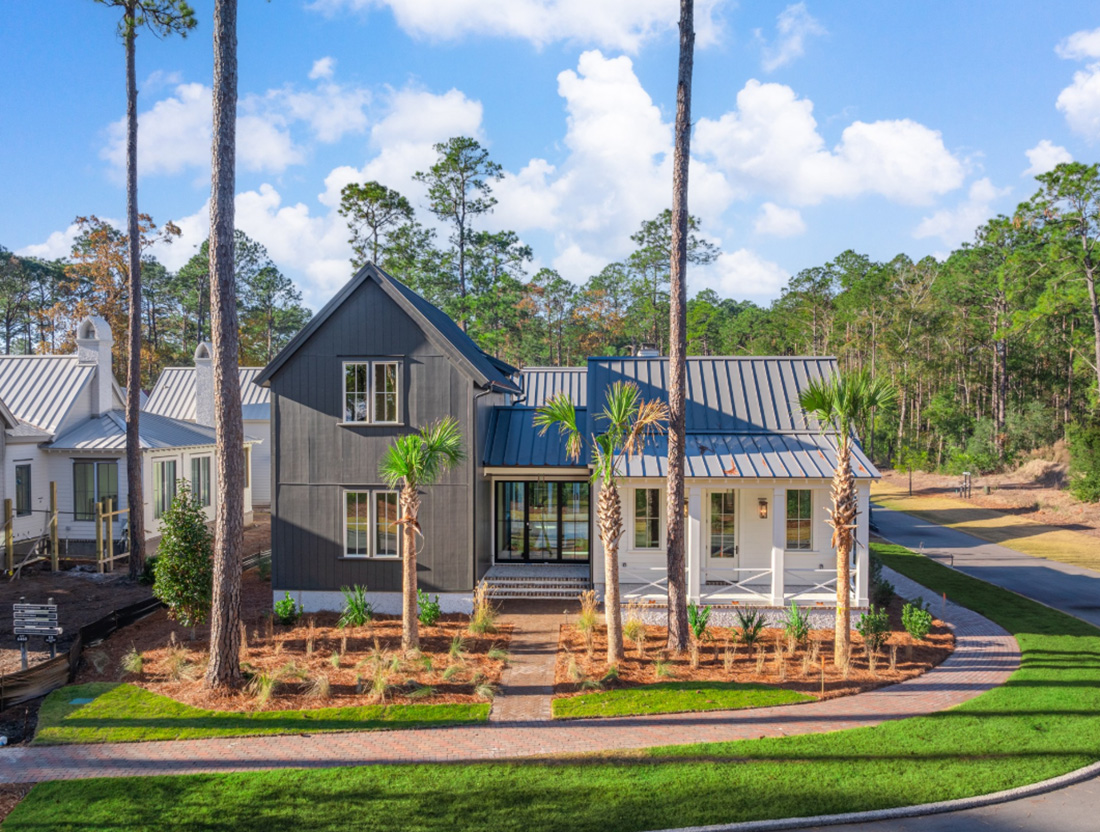
The Ultimate Choice: Building vs Buying a Home in Palmetto Bluff For those searching for Palmetto Bluff homes for sale, this common question often arises: Should you choose an existing residence, or embrace the opportunity to build your own? While a complet...
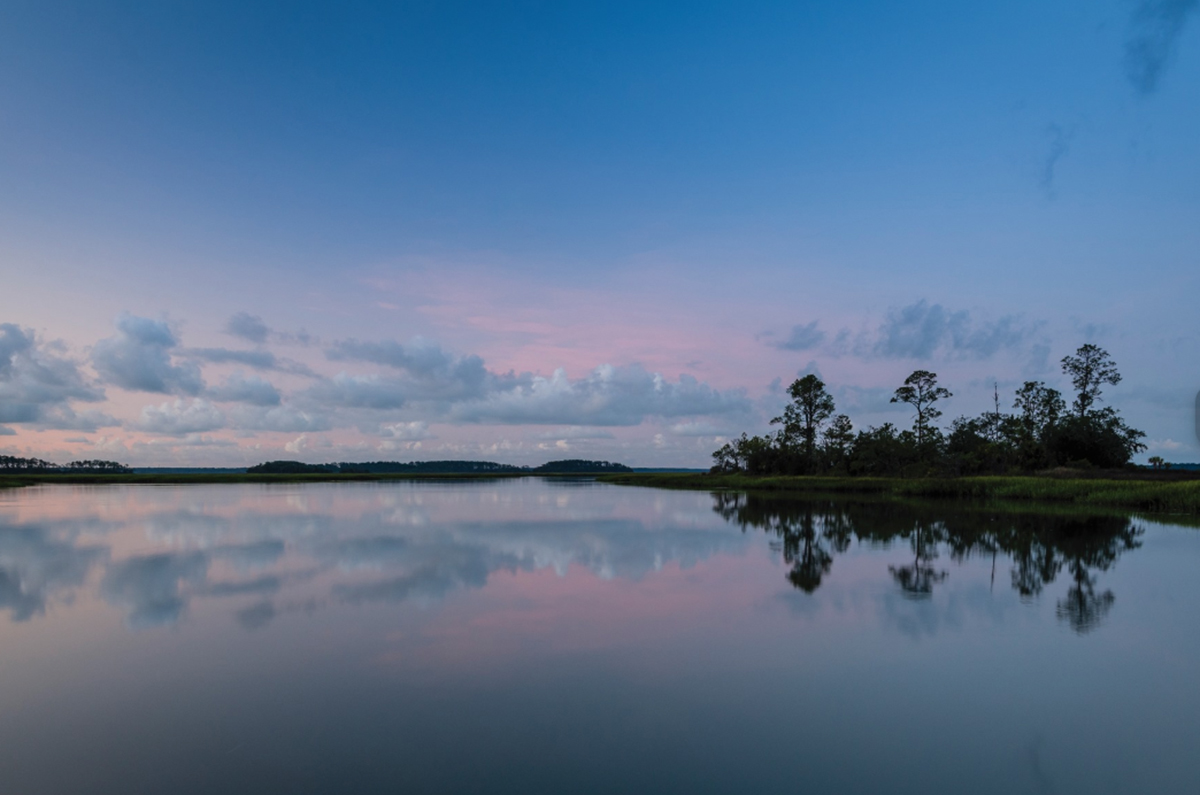
A Complete Guide to South Carolina Winter at Palmetto Bluff South Carolina's winter is unlike any other on the East Coast. While many travelers search for “South Carolina winter” expecting cooler temperatures and limited outdoor options, the Lowcountry revea...

River Road: Where Lowcountry Beauty Meets Elevated Everyday Living Tucked gracefully between Wilson Village and Moreland Village, River Road is one of Palmetto Bluff’s most immersive communities. It's where the pace of life seems to soften, classic Southern ...
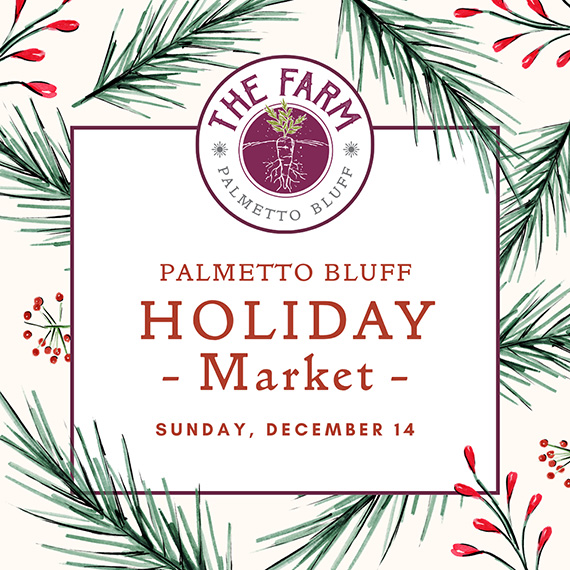
Sunday, December 14 | 9am to 1pmVillage GreenThe season’s most festive farmers market, the Holiday Farmers Market, comes to Wilson Village on Sunday, December 14, from 9am to 1pm. All are welcome to visit and experience the magic of holidays at the Bluff. The ...

Tucked amid whispering pines and overlooking a tranquil water trail, 11 Lyonia Street is where Lowcountry charm meets modern artistry. The newly built residence redefines Southern living with a balance of craftsmanship and calm. This is a home that feels both ...
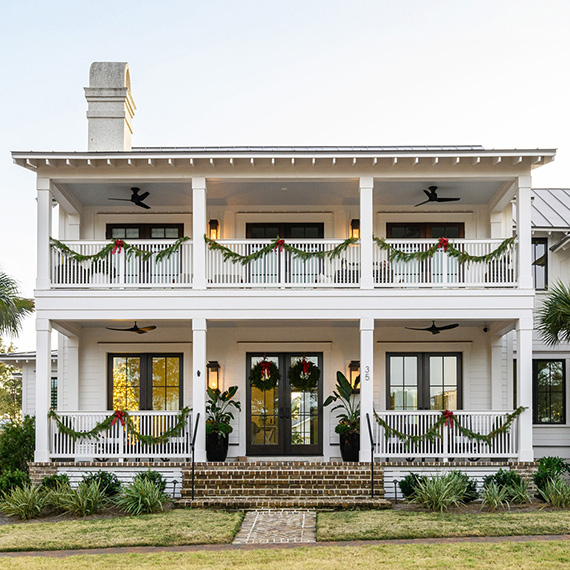
The holiday season in the Lowcountry brings crisp air, oaks draped in twinkling lights, and laughter drifting from homes where families and friends gather once again. At Palmetto Bluff, the holidays are more than just a season; they’re a feeling of togethernes...
We do not attempt to independently verify the currency, completeness, accuracy or authenticity of the data contained herein. All area measurements and calculations are approximate and should be independently verified. Data may be subject to transcription and transmission errors. Accordingly, the data is provided on an “as is” “as available” basis only and may not reflect all real estate activity in the market”. © [2023] REsides, Inc. All rights reserved. Certain information contained herein is derived from information, which is the licensed property of, and copyrighted by, REsides, Inc.